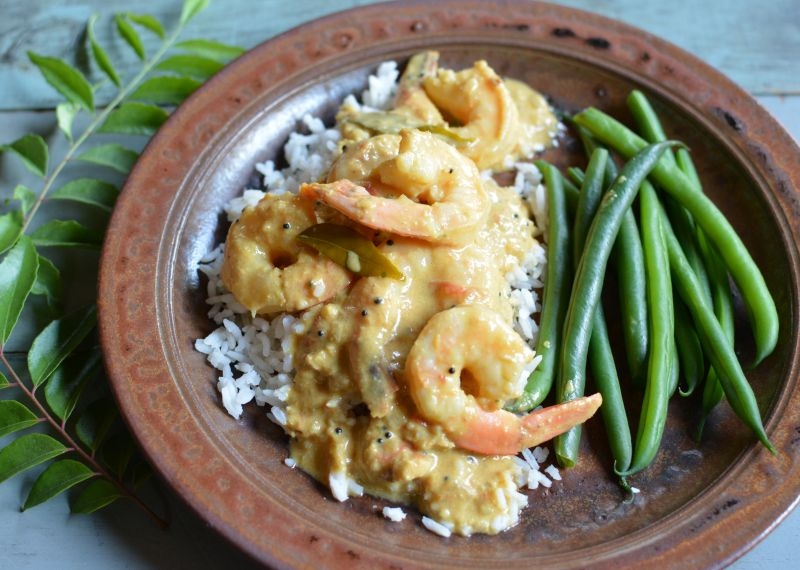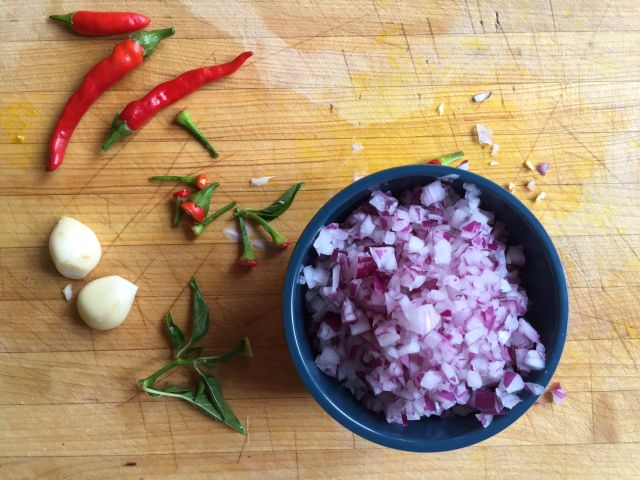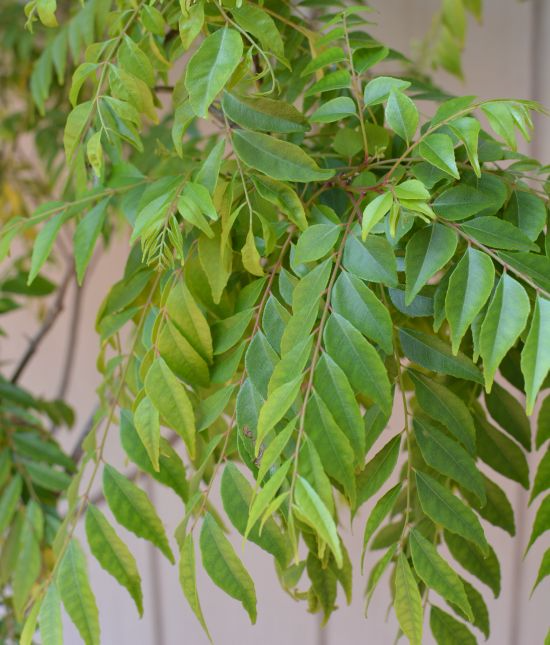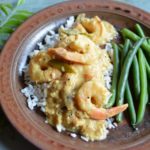
Believe it or not, one of my favorite Indian cookbooks is published by Betty Crocker. It was written by Indian food expert Raghavan Iyer and titled, Indian Home Cooking. The book title seemed modest but the 2001 work is full-color and loaded with practical information, including a detailed guide to buying the many kinds of legumes used in the Indian kitchen. There’s a super helpful photo identifying them so you don’t get confused at an Indian market.
Based in the Midwest, Raghavan is a gifted teacher, someone I’ve known for years. He’s straightforward in explaining things and works to demystify Indian cuisine. Raghavan is also funny. I’ve seen him jump atop a demo table to show an audience how to properly straddle a coconut grater to obtain freshly grated coconut. At Craftsy.com, he teaches an award-winning class on Indian restaurant favorites.
I’ve cooked a number of recipes from Indian Home Cooking and love them. This past Friday, after putting the pho book to bed, I needed to switch gears. Friends were coming for an impromptu dinner party and I felt like good Indian food, which we sorely lack in Santa Cruz.
Paging through Indian Home Cooking, I came across this recipe which was dead simple and involved one of my favorite pantry ingredients, coconut milk. The dish hails from Kerala, the southern Indian coastal region once called Malabar. Raghavan called it meen curry and I’ve also seen it as fish moli or meen moli (moolie and other similar spellings). Fish is most often used but last Friday I experimented: I made it with fresh rock fish and shrimp. Both kinds of seafood worked well.
Other Renditions
In another favorite cookbook, My Bombay Kitchen, Niloufer King suggests 2 pounds of clams or mussels instead of a pound of fish or shrimp. Her moli recipe was subtler than Raghavan’s recipe, which includes a lot of chiles and garlic. I used all 8 cloves of garlic but you may want to dial it down a notch. Our guests did not mind the garlic, which mellows. If yours mind the garlic, offer lime wedges for them to brighten things up.

Another ingredient in Kerala moli is curry leaf. I have a curry leaf bush/shrub on the patio that was growing vigorously and begging to be used. What’s curry leaf? It’s like curry but it’s not like the curry spice blends that we think of. It has a wonderful aroma and is sometimes vaguely petroleum in the good way that a nice Riesling sometimes has a petroleum quality. You can buy curry leaf (karhi patta or neem) at Indian markets. They freeze well. In the recipe below, Raghavan offers cilantro as a substitute.
I raised this guy for over 10 years. The start was about 10 inches tall and purchased from an Indian market. Curry leaf loves warmth but needs a little shade too. I keep it in a pot on our patio near a wall to protect it during winter.

If you can’t find garbanzo flour (it’s sold at the health food stores and Indian markets), try substituting brown or white rice flour. The point of using the flour is to lightly thicken the sauce. I served it with basmatic rice but it would be great atop brown jasmine too.
Kerala Shrimp in Coconut Milk
Ingredients
- 1 pound extra-large peeled and deveined shrimp
- ½ teaspoon sea salt plus more as needed
- 1 13.5 ounce can unsweetened coconut milk
- 6 to 8 medium cloves garlic, coarsely chopped
- 4 Thai, serrano, or cayenne chiles, roughly chopped
- 1 tablespoon garbanzo bean flour besan
- ¼ teaspoon ground turmeric
- 1 tablespoon neutral oil or virgin coconut oil
- 1 teaspoon black, brown, or yellow mustard seed
- 1 cup finely chopped red onion
- ½ cup grated ripe tomato (use the largest hold on a box grater)
- 12 to 15 curry leaves, or ¼ cup finely chopped cilantro
Instructions
- Lightly salt the shrimp to refresh, then rinse and set aside to drain well.
- To make the sauce, use a blender or hand-held blender. Whirl together ¼ coconut milk with the garlic, chiles, garbanzo bean flour, and turmeric. Aim for a smooth mixture. Add the remaining coconut milk and blend to combine well. Keep by the stove.
- In a medium skillet, heat the oil and mustard seeds over medium high. When the seeds start popping, cover to shield yourself. When the popping stops, uncover and add the onion. Cook, stirring frequently for 2 to 3 minutes, until the onion begins browning.
- Pour in the coconut milk mixture. Then add the tomato and curry leaves (or cilantro). Bring to a brisk simmer and cook for 5 to 6 minutes, to remove some of the raw garlic qualities. Add the shrimp, lower the heat, and cook for a few minutes until firm and curled into a nice “C” shape. If you fear the sauce reducing too much, partially cover the skillet, during cooking.
- Let rest for 10 minutes to compose flavors before serving.
More favorite Indian recipes on VWK:
- Seared Ginger Raita
- Basic Yellow Split Pea Dal
- Spicy Tofu and Peas (Mataar Soy Paneer)

















